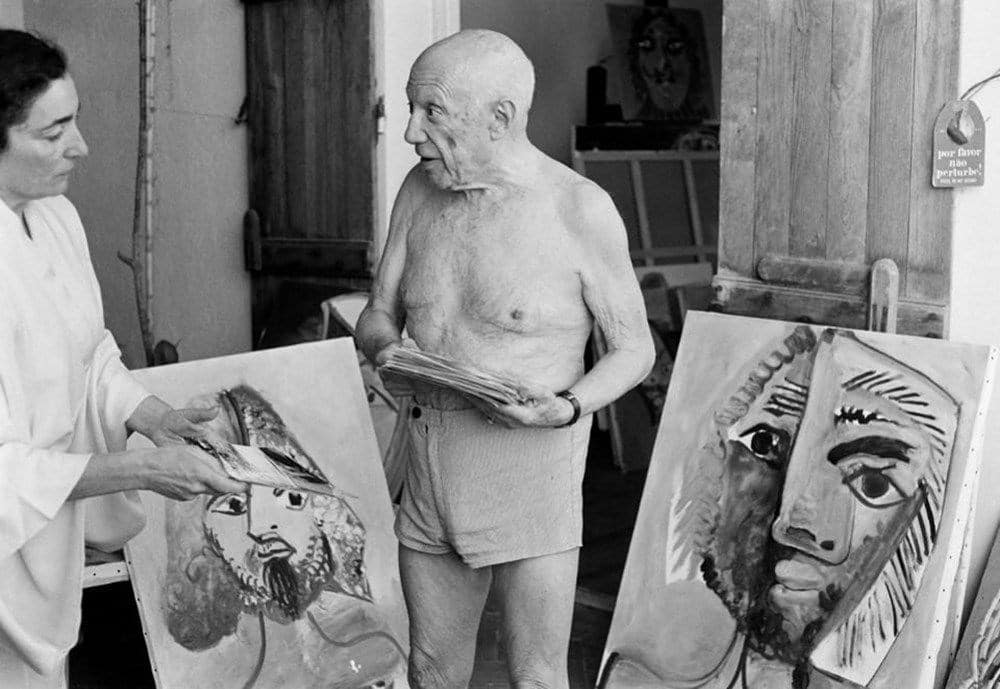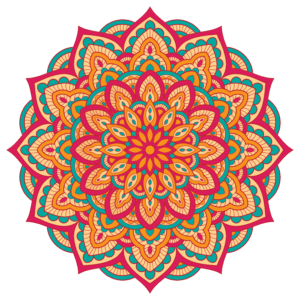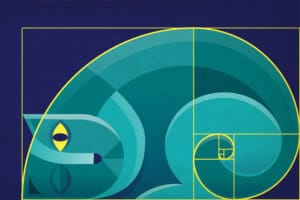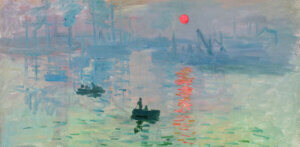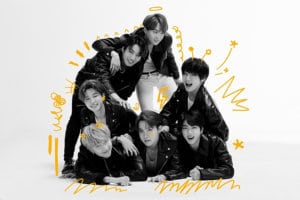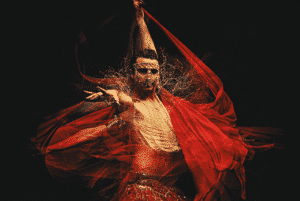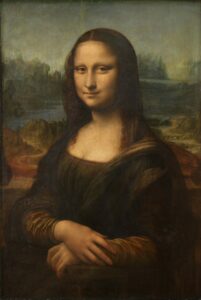
Pablo Picasso , one of the important artists of the 20th century, influenced the world with his art during his 92-year life. Besides being a master painter, he was also an artist who produced works in the fields of sculpture, ceramics and engraving. His work matured from the naturalism of his childhood to Cubism, then Surrealism and beyond; has shaped the direction of modern and contemporary art over the decades.
1881-1900 Pablo Picasso and His Works

He was the first child of Don José Ruiz y Blasco and María Picasso y López, born in the town of Malaga, in the Andalusia region of Spain. The full name of the artist we all know as “Pablo Picasso” is Pablo Diego José Francisco de Paula Juan Nepomuceno María de los Remedios Cipriano de la Santísima Trinidad Ruiz y Picasso .
Pablo Picasso’s father was an artist and earned his living from the works he produced; taught art classes and curated the local museum. Don José Ruiz y Blasco began teaching drawing and oil painting when Pablo Picasso was seven, and he thought the young Pablo was a suitable student to become an artist.
At the age of 13, Picasso entered the Barcelona School of Fine Arts, where his father taught. In 1897, Picasso began his studies at the Real Academia de Bellas Artes de San Fernando, Madrid’s, then Spain’s best art academy. In this new period of his life, Picasso took many portraits, especially “Lola’s First Communion” .
Picasso was just 15 years old when he finished the First Communion, a well-known portrait depicting his father, mother and sister. 19. As the century drew to a close, elements of Symbolism and his own interpretation of Modernism began to emerge in his stylized landscapes.
1900-1940 Years
In 1900, Picasso went to Paris, which was the center of European art at that time, thanks to the selection of a painting in the Spanish pavilion of the Universal Exhibition. She shared a house with the poet and journalist Max Jacob. They both lived in abject poverty, sometimes even burning their works for warmth. Picasso’s first months in Paris were spent painting paintings that refused to use color with its representational values, and often turned to wild and raw tones, similar to German expressionism, excluding the play of light and shadow. Despite the difficulties he experienced, he opened his first exhibition in Vollard’s gallery in 1901.
After Paris, he moves to Montmartre. Picasso produced all of the blue and pink period paintings he painted during the years of poverty in Montmartre, the district of the poor, at that time.
Pablo Picasso and the Blue Period
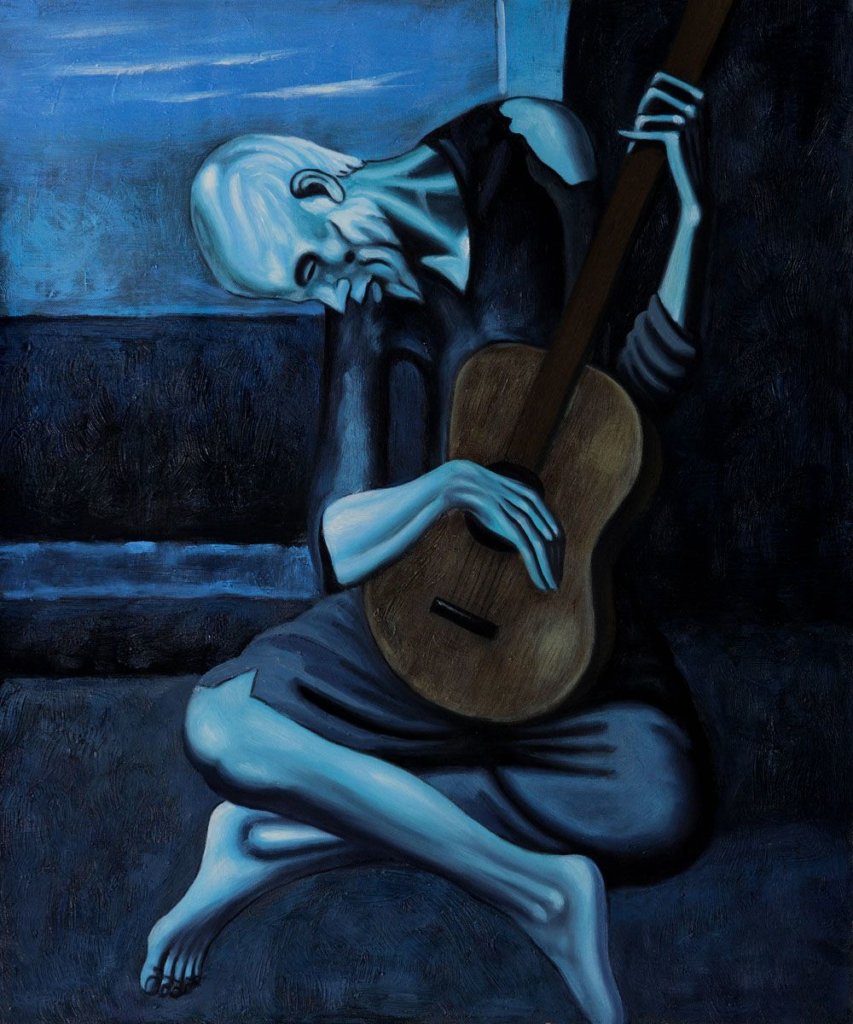
Picasso’s period of art known as the Blue Period lasts from 1901 to 1904. During this time, the artist emphasized blue tones in his works. For example, the famous artwork “El viejo guitarrista ciego” (The Old Guitarist), dated 1903, often used to reference this period, features a guitar in warmer brown tones in the middle of the blue tones.
Picasso’s works during the Blue Period were perceived as gloomy works due to his color choices and light tones. Historians attribute Picasso’s Blue Period largely to the artist’s marked depression. The suicide of Casagemas, who came to France from Spain and was his roommate at that time in Montmartre, triggers this process. In the works of the Blue Period, we generally encounter melancholy, dull-eyed people and exclusion.
Pablo Picasso and the Pink Period

In Picasso’s art, from 1904 onwards, changes in form and subject begin to become visible. His palette begins to expand from monochrome blue to gray, pink and soft brown. The transition from the Blue Period to the Pink Period is reflected in the colors used rather than the subject of the works. The focus of the Pink Period works is still human and people are still unhappy. On the contrary, people seem more open to struggle. Faces, hands and bodies began to become beautiful; He started to include more everyday objects in his works.
Harlequins, clowns, and circus folk are among the recurring themes in these works. One of his best-selling works in the Pink Period is “ Garçon à la pipe” (The Boy with a Pipe).
“Art washes away the dust of everyday life from the soul.”
Afro Period (1907-1909)
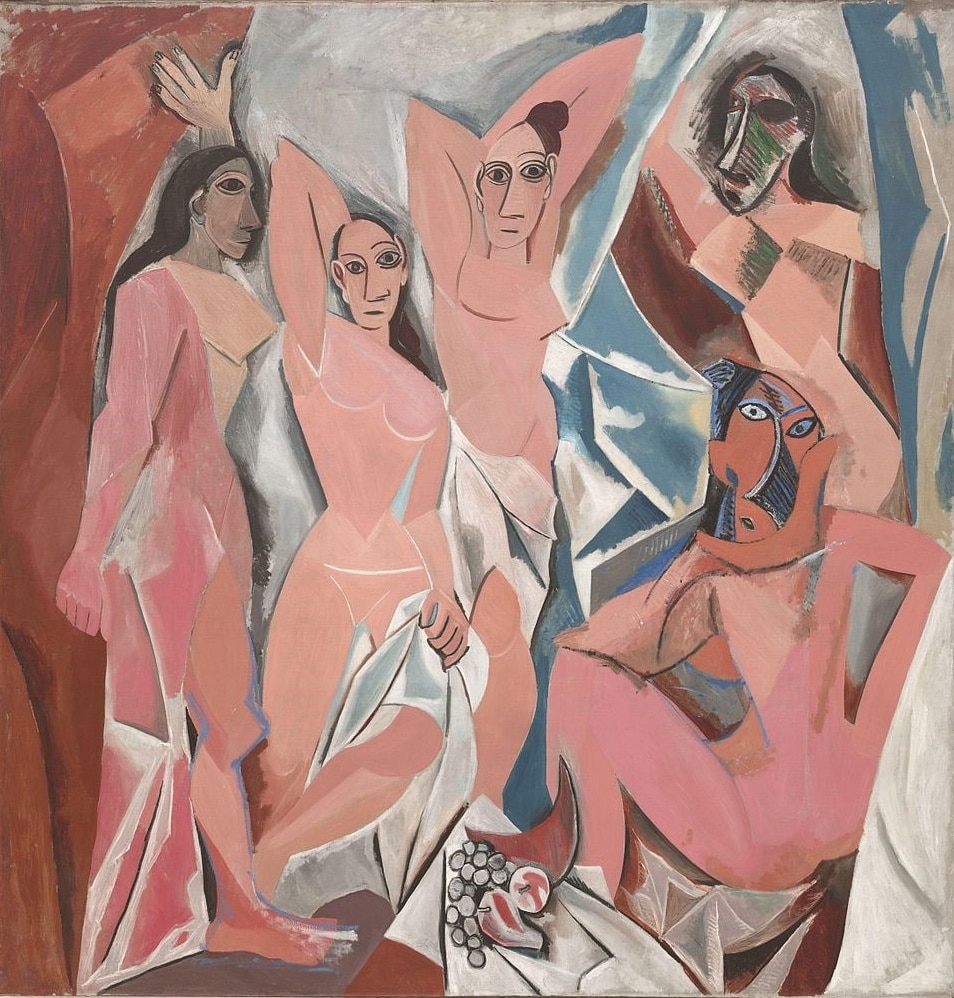
During the period of African art and Primitivism from 1907 to 1909, Picasso created “Les Damoiselles d’Avignon” , one of his most well-known and controversial works. During this period of his art, he was inspired by works of African art and an African mask by Henri Matisse, which he saw in an exhibition at the Palais de Trocadero.
Pablo Picasso and Analytical Cubism (1907-1912)

During this period, Picasso worked with the painter Georges Braque to start the Cubist movement. He used a palette of earth tones in his paintings from this period. The works consist of complex geometric forms. His romantic partner of seven years, Fernande Olivier, was involved in most of the artist’s Cubist works from this period.
Synthetic Cubism (1912-1919)
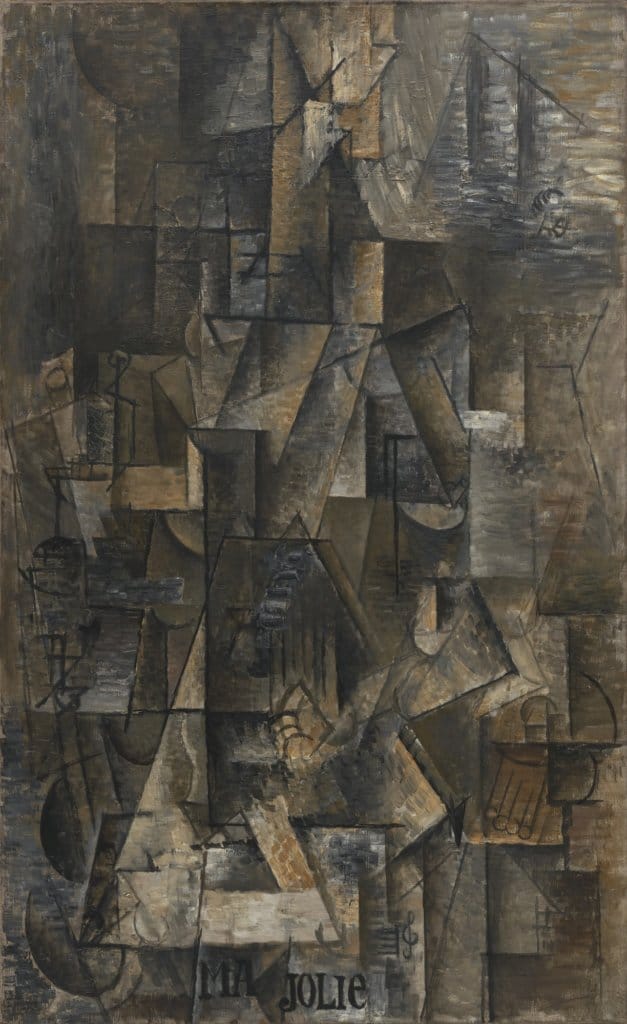
Picasso’s work continued as Cubist. However, the artist added collage as a new art form to some of his works. He also incorporated the human form into his painting, producing many Cubist works such as “Ma Jolie” (1911-12). Many artists he knew had left Paris to fight in the First World War. But Picasso continued to spend the war years in his workshop.
When his relationship with Fernande Olivier ended in 1912, he fell in love with another woman. He and Eva Gouel, the subject of her 1911 painting “Woman with a Guitar,” were together until her untimely death from tuberculosis in 1915.
He met his first wife, Olga Khoklova, a ballerina from Russia, whom he married in 1918. Three years later they had a son. The artist and Olga Khoklova soon became estranged. Picasso refused a divorce to avoid having to give his wife half of his fortune. They remained married only in name, until Olga Khoklova died in 1955.
Neoclassicism and Surrealism (1919-1929)

Picasso’s style witnessed a significant change during this period. After his first visit to Italy and the end of World War I, he produced paintings such as “Sleeping Peasants” (1919), which the artist produced in watercolor. This style contrasted sharply with his Cubist paintings. However, as the French Surrealist Movement began to gain strength in the mid-1920s, Picasso began to rekindle his passion for Primitivism in paintings influenced by Surrealism.
Picasso began working with artist and photographer Dora Maar in the late 1930s. In the 1930s, he created Picasso’s famous Guernica, a unique depiction of the Spanish Civil War. The menacing minotaur (half-human bull) became a central symbol of his art.
“Learn the rules like a pro so you can break them like an artist.”
1940-1973 WWII

Picasso chose to stay in Paris while the German occupation continued. The police force in the countries that began to be occupied by Nazi Germany was pressured by the Gestapo.
He occasionally wrote poetry. Picasso produced more than 300 works between 1939 and 1959. In 1944, Paris was liberated again, and Picasso began a relationship with the young art student Françoise Gilot during this period. They had a son, Claude, in 1947, and a daughter, Paloma, in 1949. Picasso focused on sculpture and participated in an international exhibition when his relationship with Gilot was about to end. In 1949 he made a sculpture known as “Chicago Picasso” for the Philadelphia Museum of Art.
In 1961, at the age of 79, the artist married 27-year-old Jacqueline Roque. Jacqueline Roque has become one of the biggest inspirations of Picasso’s career. Picasso has produced more than 70 portraits in the last 17 years of his life.
As the artist approaches the end of his life, it can be said that he is experiencing a flurry of creativity. The resulting artworks were a blend of their previous styles; It included color paintings and copper engravings. Art experts later agreed that Picasso’s last works marked the beginning of Neo-Expressionism.
Picasso died on April 8, 1973 in France.
Frida Kahlo and the Art of Self-Portraits: 12 Interesting Self-Portraits of Frida

